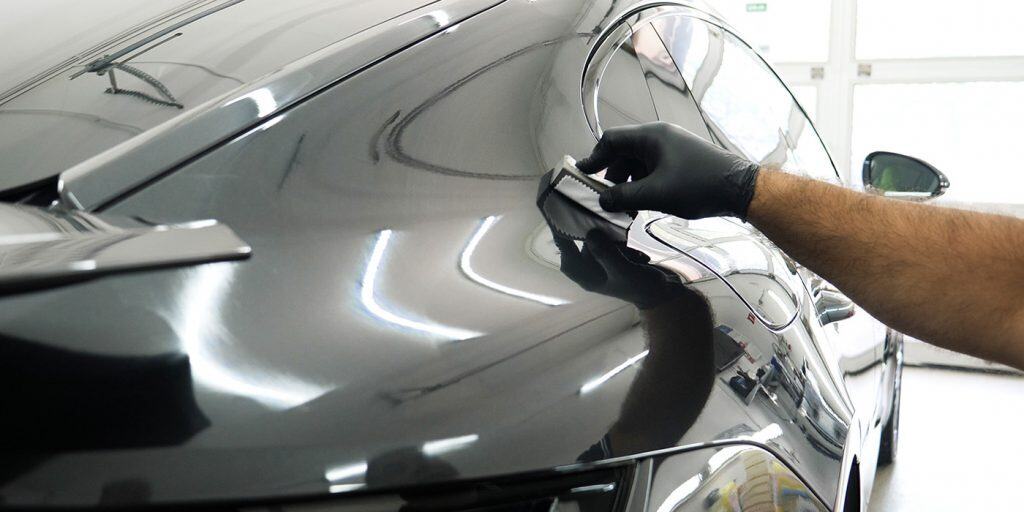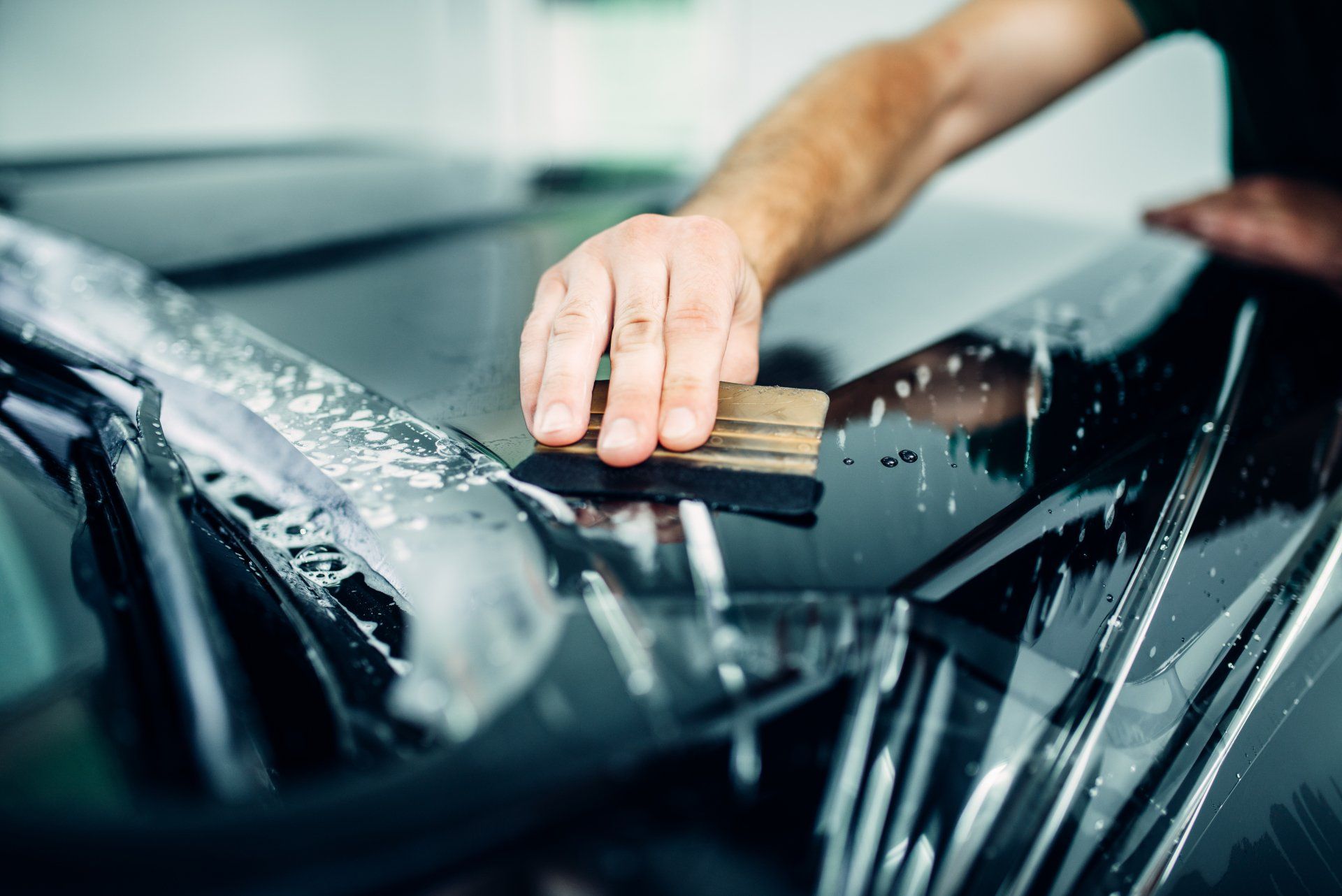Just How Ceramic Finish Secures Your Automobile's Paint and Maintains It Looking New
Ceramic finish has become a sophisticated service for automobile paint security, supplying a powerful obstacle against the components. By producing a hydrophobic layer that bonds with the lorry's existing finish, this sophisticated technology not just pushes back water but also defend against ecological contaminants and dangerous UV rays. The result is a considerable decrease in paint destruction and a long-lasting aesthetic allure. Recognizing the complexities of exactly how this procedure functions and the advantages it provides can substantially affect your vehicle upkeep method. What lies underneath the surface of this innovative strategy?
What Is Ceramic Finishing?

When applied properly, ceramic coverings develop a semi-permanent bond with the surface area of the car, using premium defense versus UV rays, chemical discolorations, and minor scratches - ceramic coating. Unlike conventional wax or sealants that may wear away within months, ceramic coatings can last for several years, relying on the product and maintenance
The application procedure involves comprehensive surface area preparation, including cleaning, sanitizing, and brightening the paint to ensure optimal attachment. As soon as the coating is applied, it remedies and hardens, leading to a hydrophobic surface area that fends off grime, water, and dirt. This hydrophobic home not just makes the car less complicated to clean yet also enhances the general gloss and clarity of the paint, adding to a showroom-quality surface. As a result, ceramic finish is significantly favored by cars and truck fanatics and experts looking for long-lasting paint security.
Advantages of Ceramic Layer
Why should automobile proprietors consider spending in ceramic covering? The benefits of ceramic coating expand far beyond simple looks, providing substantial protection and durability for an automobile's paintwork.
Additionally, ceramic coverings give a durable shield versus UV rays, which can cause paint to fade and oxidize gradually. This safety layer helps gloss and preserve the vibrancy of the lorry's color, ensuring it looks new for several years. Ceramic coatings are recognized for their sturdiness; they can last a number of years with correct upkeep, making them an economical investment in the long run (ceramic coating).
An additional significant benefit is the ease of maintenance they use. With a ceramic-coated surface area, small scrapes and swirl marks are much less likely to happen, and when they do, they are simpler to buff out. Generally, the investment in ceramic finishing not only boosts the aesthetic charm of a lorry but additionally provides long-term defense that can conserve vehicle proprietors money and time.
Just How Ceramic Coating Functions
Recognizing just how ceramic finish jobs is essential for automobile owners considering this safety service for their lorry's paint. Ceramic finishings are composed of sophisticated nanotechnology that forms a long lasting, protective layer over the surface of the cars and truck's paint. When applied, these liquid polymers bond chemically with the factory paint, developing a strong, hydrophobic layer that repels water, dust, and other contaminants.
The primary component in ceramic finishings is silicon dioxide (SiO2), which gives the covering's hardness and resistance to UV chemicals, rays, and scratches. This molecular bonding develops a safety guard that is substantially harder than standard wax or sealers, providing lasting defense. The hydrophobic nature of the covering means that water beads up and rolls off the surface area, taking dust and crud with it, therefore making the automobile less complicated to clean up.

Application Refine of Ceramic Finish
The application process of ceramic finishing requires careful prep work and attention to detail to make certain ideal results. The automobile needs to undergo a thorough cleansing to eliminate dirt, gunk, and contaminants. This action usually consists of a clay bar treatment to eliminate ingrained particles that could jeopardize the coating's adhesion.
Following the cleansing, a detailed evaluation of the paint surface area is important. Any kind of existing imperfections, such as scrapes or swirl marks, should be resolved through polishing. This ensures a smooth and reflective surface area, enhancing the last look of the ceramic finishing.
When the paint is prepared, the ceramic finish is applied in a regulated environment to avoid dirt and particles from contaminating the surface. Using a specialized applicator, the covering is evenly distributed in areas, permitting correct bonding with the paint. It is crucial to adhere to the manufacturer's guidelines concerning curing times and ecological problems during application.
After the application, a curing period is essential for the finishing to achieve its complete protective properties. This procedure can differ in duration based upon the certain product utilized, however it is important for achieving the desired durability and durability of the ceramic layer.
Maintenance Tips for Ceramic Finish
Maintaining a ceramic coating is necessary for protecting its protective homes and ensuring the long life of your lorry's outside. Stay clear of automatic automobile washes, as their harsh chemicals and brushes can degrade the finishing.
After washing, wash extensively and dry the car with a clean microfiber towel to avoid water spots. It's advisable to carry out maintenance cleans every 2 weeks to keep the layer in great condition.
In addition, think about applying a dedicated ceramic coating booster or spray sealant every few months. These items improve the hydrophobic residential properties and add an added layer of protection.
Examine your lorry consistently for any contaminants such as tree sap, bird droppings, or road tar, and eliminate them without delay using a clay bar if required. Park your vehicle in check my blog a garage or make use of a cars and truck cover to minimize exposure to harsh ecological aspects. ceramic coating. By complying with these maintenance tips, you can make sure that your ceramic layer remains effective and your automobile maintains its showroom shine
Conclusion
To conclude, ceramic finishing offers as an important protective action for automotive paint, providing various advantages such as enhanced resilience and resistance to ecological dangers. The advanced chemical bonding procedure makes sure a lasting shield against impurities, UV rays, and oxidation, thereby preserving the lorry's aesthetic appeal. Correct application and upkeep are crucial for taking full advantage of the efficiency of ceramic coverings, eventually adding to a vehicle's longevity and preserving a showroom-quality coating with time.
Ceramic coating is an advanced safety service developed to boost and maintain the appearance of vehicle paint. Ceramic finishing is increasingly preferred by car fanatics and specialists seeking resilient paint security.
Understanding exactly how ceramic finish works is important for cars and truck owners considering this safety option for their lorry's paint. Ceramic finishes are made up of advanced nanotechnology that forms a sturdy, protective layer over the surface of the vehicle's paint.The main part in ceramic learn this here now finishings is silicon dioxide (SiO2), which offers the finishing's hardness and resistance to UV rays, chemicals, and scrapes.